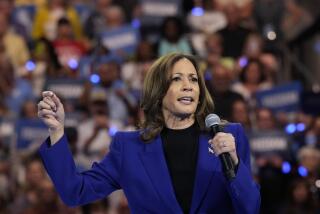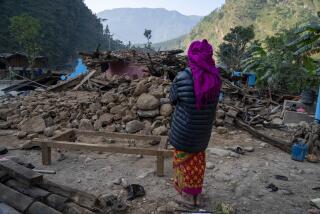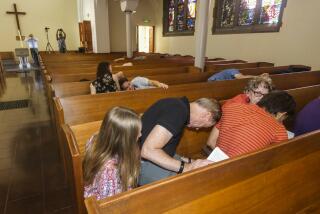India Quake Strains Relief Capabilities
They are hardly newcomers to the tragedies wrought by nature, not with the cyclones, floods and fires that have ravaged cities.
Still, the magnitude 7.9 earthquake that devastated India in recent days has challenged, not only that nation’s infrastructure, but also the emergency relief efforts of America’s Indo-American community.
A jumbo jet carrying more than $1 million in pharmaceuticals and nutritional supplements left Los Angeles International Airport on Wednesday as part of Southern California’s earthquake relief effort.
Additionally, scores of local businesses and organizations such as the American Hindu Federation have mobilized to collect materials and cash for India’s quake victims.
But just as that nation has been caught by surprise by the extent of damage and injuries, so have many in the Southland’s Indian American population of a quarter-million.
“India has never faced this kind of earthquake disaster and I don’t think Indo-Americans are prepared . . . on how to coordinate help,” said Sunil Aghi, founder and president of the Indo-American Political Foundation.
While applauding the relief efforts since Friday’s quake, R.M. Abhyankar, the Western states counsel general of India, acknowledged the challenge.
“Recently we have had a natural disaster almost every seven or eight months,” he said by phone from San Francisco. “But nothing that can compare with this earthquake.”
With fatalities estimated at 30,000 to 100,000, the temblor’s toll has already far exceeded the 10,000 killed in a 1993 quake in India or a magnitude 8.6 quake in 1950.
On Tuesday afternoon, two nonprofit relief agencies--the Los Angeles-based Operation USA and Direct Relief International of Santa Barbara--joined forces to airlift about 13 tons of medical supplies to India.
Officials at Direct Relief International said the effort was its largest shipment yet of aid to quake victims in India and was made possible by Atlas Air, which offered the organizations a 747 for the airlift. The flight, officials said, would be in memory of Atlas’ late founder and chief executive, Michael A. Chowdry, a Pakistani immigrant killed Jan. 24 when the private plane he was flying crashed near Denver.
In the meantime, representatives of Indo American organizations said they were also collecting supplies and raising emergency funds for India.
“There are so many people who want to send everything,” said Archana Chaturvedi of the American Hindu Federation’s regional chapter. “The thing is . . . we don’t want to take food because right now they have food. What they really need is manpower, clothes, blankets and, of course, the money.”
To make donations, people may contact the American Hindu Federation, 2555 E. Champman Ave. Suite 213, Fullerton, CA. 92631, (909) 217-7680 or 925-5205; and the Saurashtra Foundation, 1530 Spence St., Los Angeles, CA 90023, (323) 262-8108
So far, Chaturvedi said, the federation has sent almost $10,000 directly to quake victims, including those in her husband’s hometown of Ahemadabad, the site of the second-largest number of casualties.
“We are sending it directly there so nothing gets filtered off,” she said.
“A lot of time you donate $1 to an organization and only 30 cents gets there: The rest goes to an administration. So we want to send the whole amount directly.”
Her husband, Gopal, vice president of the federation, agreed: “We don’t want to send to the big organizations.”
But even if some local groups have raised $100,000 or more for India’s victims, he said, the needs are far, far beyond that.
“We need a lot of help,” Gopal said. “It is not like here. People there live in high-rises like Hong Kong, and so when buildings collapse . . . they are trapped.
“That is why the numbers are so high,” he said. “People are still trapped. Every day . . . it is very, very tragic.”
More to Read
Sign up for Essential California
The most important California stories and recommendations in your inbox every morning.
You may occasionally receive promotional content from the Los Angeles Times.










